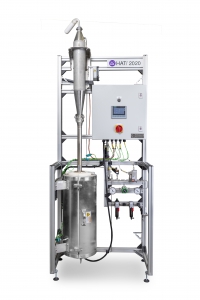Introduction
The bench scale Hot Attrition Test (HAT) Unit is the superior method to predict catalyst losses. This bench scale uses laboratory testing at temperature conditions similar to commercial Fluid Catalytic Cracking (FCC) operation.
Fluid Catalytic Cracking (FCC) catalysts can undergo particle breakdown, also known as attrition. As a result, this breakdown leads to the production of fines. Most FCC units have recovery systems to control the loss of these fines to the environment. In that case, these units comply with governmental emission regulations.
Attrition directly affects the loss of catalyst from a FCC unit. For that reason, it is an important factor in the operating cost in a commercial oil refinery. Therefore, it is necessary that the catalyst is sufficiently attrition resistant. In order to determine this resistance, tests can be done at laboratory scale to gauge the intrinsic attrition propensity of the catalyst.
In conclusion, the purpose of the HAT unit is to operate on a scale where industrial concerns can be addressed. Albemarle pioneered this technology and 360°KAS brought it to market in 2003 in the form of our bench scale HAT unit.
HOT ATTRITION TEST (HAT) UNIT – FEATURES
- Test tube material: AISI-310
- Catalyst intake per reactor: min 45 g – max 80 g
- Definition of fines: < 16 μ
- Fluidising medium: Instrument air
- Air flow: 6.5 L/min @ 700 700 ⁰C
- Type of control: PLC Controlled for sequence timing, temperature and flow
- Gas flow control: DP orifices, low/high temperature, flow
- HMI & Data Acquisition: PLC interfaced
- Approximate dimensions(WxDxH in mm): 600*300*2000mm



